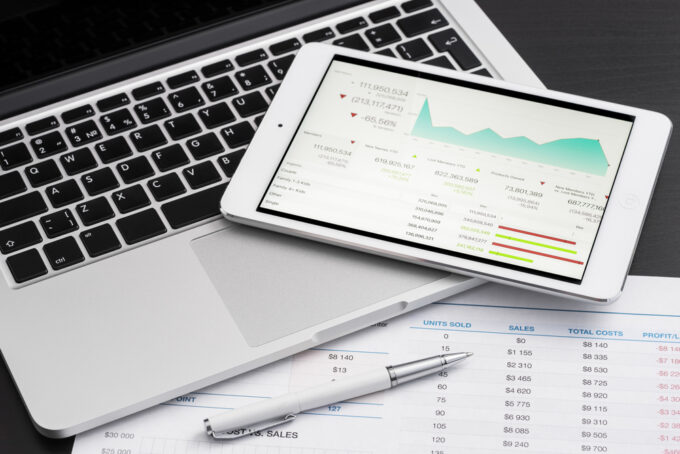Do you ever wonder why certain ads follow you around the internet? Have you ever considered how companies like Amazon seem to know exactly what products you’d be interested in before browsing through their site? Predictive analytics is the secret behind these kinds of targeted marketing tactics. By crafting strategies based on predictive analytics, business owners can drive more and higher-quality traffic to their ecommerce sites.
Types Of Predictive Analytics

Predictive analytics is a powerful tool that uses historical data, statistical algorithms, and machine learning techniques to predict future outcomes. Many types of predictive analytics can be used to improve business decisions or gain insights into various fields.
One type is the descriptive predictive analytics, which involves analyzing data from a specific domain to determine the characteristics and patterns of behavior. This type of analysis is proper when the goal is to understand the relationships between different variables and how they affect one another.
Another type of predictive analytics is predictive diagnostic analytics, which is used to identify the reasons behind certain events or behaviors. When an individual or organization wants to know why a specific event occurred, diagnostic, and predictive analytics is the best approach. By examining data and identifying root causes, decision-makers can make informed decisions about how to mitigate or manage risks.
In contrast, predictive prescriptive analytics determines the best course of action based on predicted outcomes. By using this type of predictive analytics, businesses, and organizations can evaluate different scenarios and determine the best course of action to optimize results. With the help of predictive prescriptive analytics, businesses can create simulations and models for various actions and see the potential outcomes before taking action.
Lastly, predictive monitoring analytics is used to monitor complex systems and prevent issues before they arise. This type of predictive analytics is particularly useful in manufacturing, aerospace, and other industries where large amounts of data are constantly generated and analyzed. Predictive monitoring analytics can be used to monitor machine performance, detect potential bottlenecks in production, or predict failures in critical equipment.
In conclusion, predictive analytics is an effective tool used to gain insights into various fields and improve business decisions. With the many different types of predictive analytics available, individuals and organizations can choose the best approach for their needs and goals. Whether descriptive, predictive analytics, diagnostic, predictive, predictive prescriptive analytics, or predictive monitoring analytics, predictive analytics can help create a more sustainable and efficient future.
How Predictive Analytics Work

Predictive analytics is an advanced data science tool businesses use to predict customer behavior and trends. It uses historical data and predictive models to identify customer behavior patterns, anticipate future outcomes, and make decisions about marketing strategies. Predictive analytics can be used for segmentation, targeting, personalization, forecasting sales, identifying cross-sells/upsells opportunities, optimizing pricing, and more.
Market segmentation pertains to dividing a market into smaller groups of consumers with similar characteristics, needs, or behaviors. This tactic enables businesses to understand their target audience so they can tailor their products, services, and marketing efforts accordingly.
Predictive analytics identify trends in sales data, such as seasonal fluctuations or changes in customer behavior. This information is useful in forecasting future sales and making better inventory, marketing, and pricing decisions.
The power of predictive analytics lies in its ability to process large amounts of structured and unstructured data from multiple sources, such as web traffic logs or product reviews. It allows businesses to gain insights that would otherwise be impossible with traditional methods like surveys or focus groups. By leveraging the power of predictive analytics, companies can increase revenue while providing a personalized experience for their customers.
Using Predictive Analytics for Ecommerce Marketing

Enhancing targeting is the most common application of predictive analytics in ecommerce marketing. By predicting which customers will likely buy a product or service, businesses can target ads more effectively at the right people and increase their return on investment (ROI).
Predictive analytics can also be used to identify/upsells opportunities.
By analyzing customer data and past purchase behaviors, companies can recommend related products that customers may be interested in purchasing. This helps encourage loyalty to the brand and provides an opportunity for businesses to increase their average order value (AOV).
Finally, predictive analytics can help with pricing optimization. Businesses can determine the optimal price point for different products or services by leveraging historical data. This helps ensure customers get a fair deal while allowing organizations to profit.
With predictive analytics, businesses can compare prices with competitors to ensure they’re not overcharging or undercharging for their products. This technology can forecast demand for products, which can help businesses set optimal prices. For example, if a business knows that demand for a product is likely to increase in the coming weeks, it can raise prices to capitalize on this demand.
How Predictive Analytics Improves Targeted Campaigns
Create a successful targeted marketing campaign by researching and understanding your target audience, which is when predictive analytics can be most helpful. What are your audience’s interests? What are their needs? What are their pain points? Once you have a thorough understanding of these areas, start developing content that resonates with them.
Predictive analytics is an invaluable tool for ecommerce businesses looking to maximize their marketing ROI. By utilizing predictive models and analyzing customer data, companies can target the right customers and create more effective campaigns tailored to their needs. It helps ensure that ad spend is used most efficiently, resulting in higher conversion rates and more sales.
Furthermore, it’s important to track the progress and results of targeted marketing campaigns to see what’s working and what’s not. That way, you can check your marketing mistakes, adjust your campaigns as necessary, and improve results over time.
In addition to better targeting, predictive analytics helps businesses save time and resources by automating mundane tasks like segmentation or forecasting. Companies can focus on more critical aspects of the business, such as product development or customer service.
Best Practices For Using Predictive Analytics
When using predictive analytics for ecommerce marketing, it’s essential to remember a few best practices. First, ensuring the data being used is accurate and up-to-date is vital. This means regularly cleaning and updating customer databases and collecting customer feedback about their experiences. Second, defining the desired outcomes is essential before beginning any predictive analysis. This will help ensure the analysis focuses on the right goals and objectives.
Finally, businesses should use the right technology and tools to support their predictive analytics efforts, such as finding a reliable platform to handle large amounts of data and facilitate data-driven decision-making. By following these best practices, businesses can ensure their predictive analytics efforts lead to success.
What Happens After Predictive Analytics

Once predictive analytics are complete and the insights are gathered, businesses can then develop strategies to take advantage of these insights. This could include creating personalized messages for customers or adjusting pricing models based on customer preferences. Companies should also continually monitor their data to identify new trends and opportunities for improvement. Ultimately, leveraging the power of predictive analytics will be beneficial for any business looking to increase its marketing ROI.
Final Thoughts
If you want to drive more and higher-quality traffic to your ecommerce site, predictive analytics can be a powerful tool. By leveraging your data, businesses can create more effective campaigns and maximize their marketing ROI. However, it’s important to remember that predictive analytics is not a one-size-fits-all solution, so finding the right approach for your specific needs is crucial. Predictive analytics can significantly improve your ecommerce marketing efforts with the right strategy and technology.









